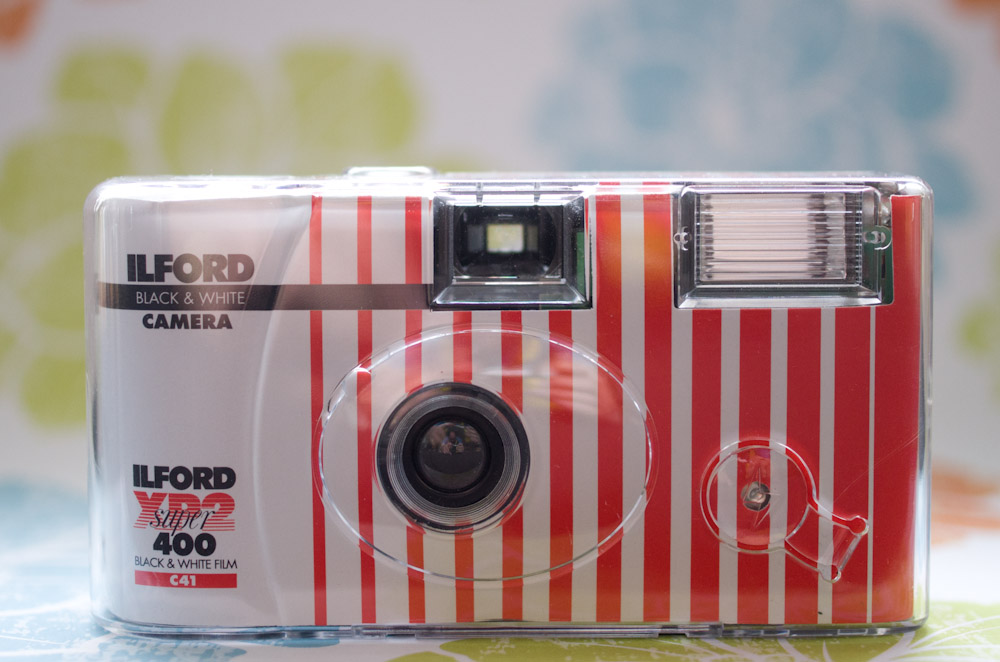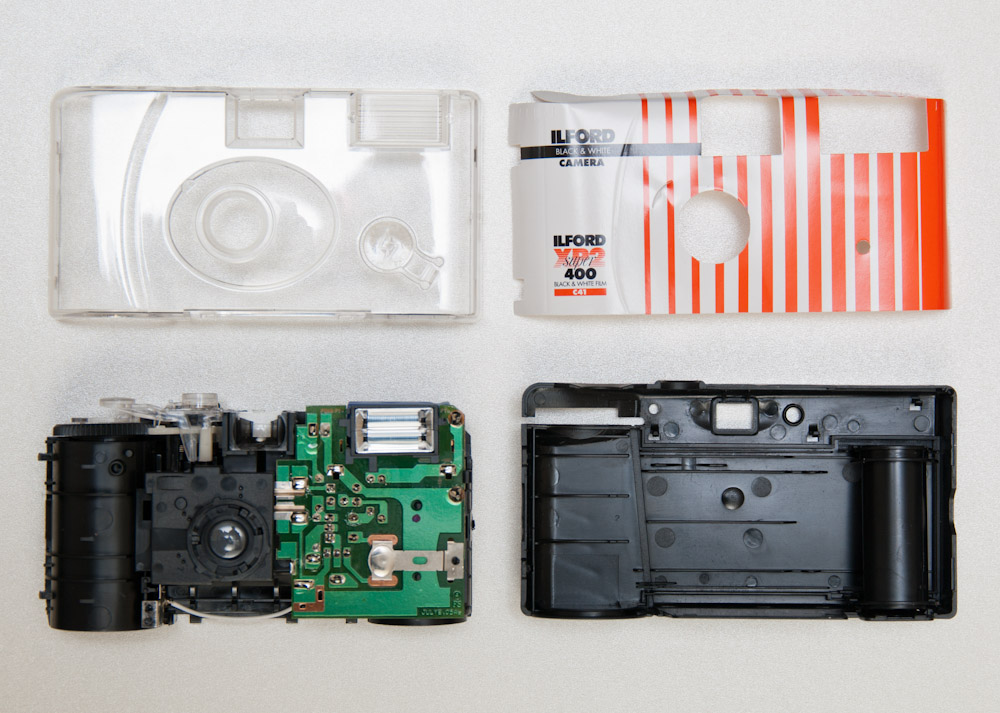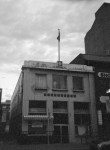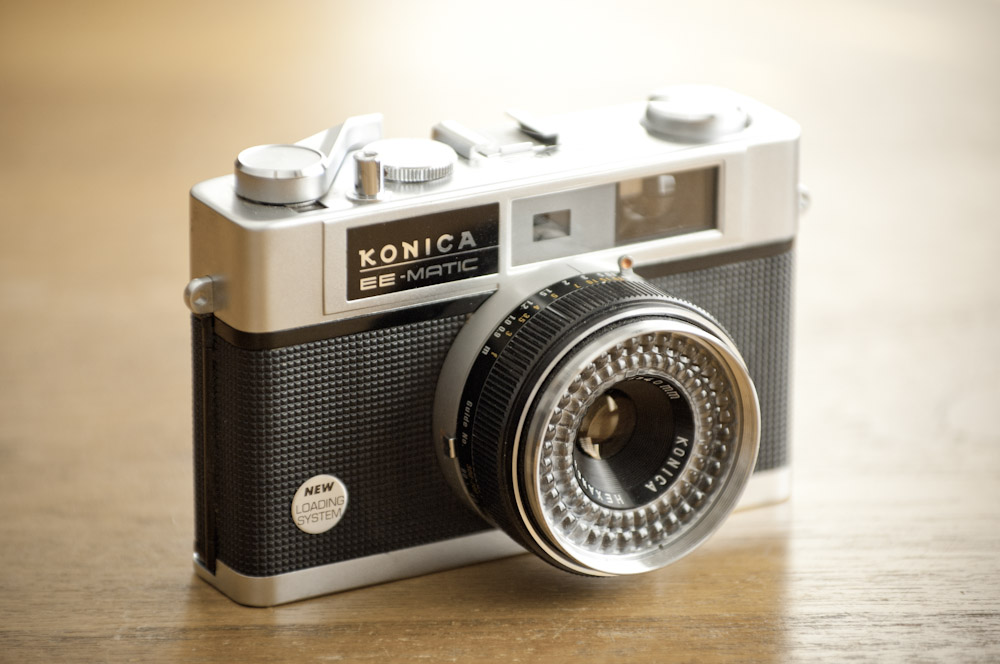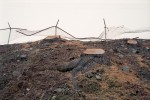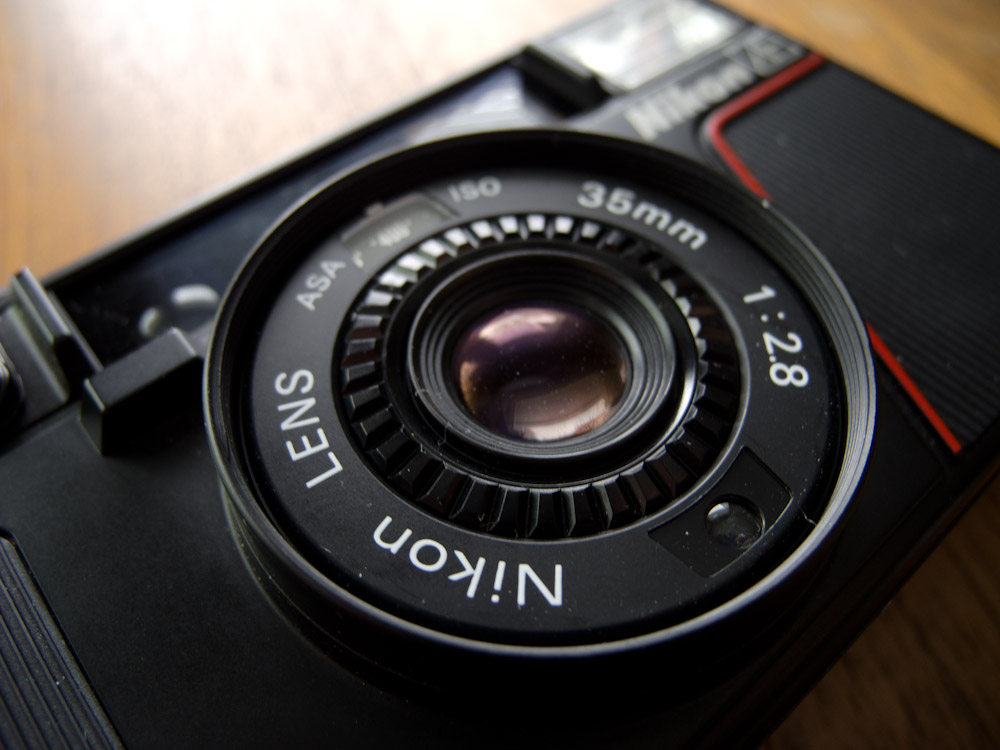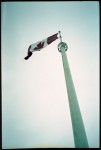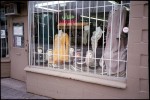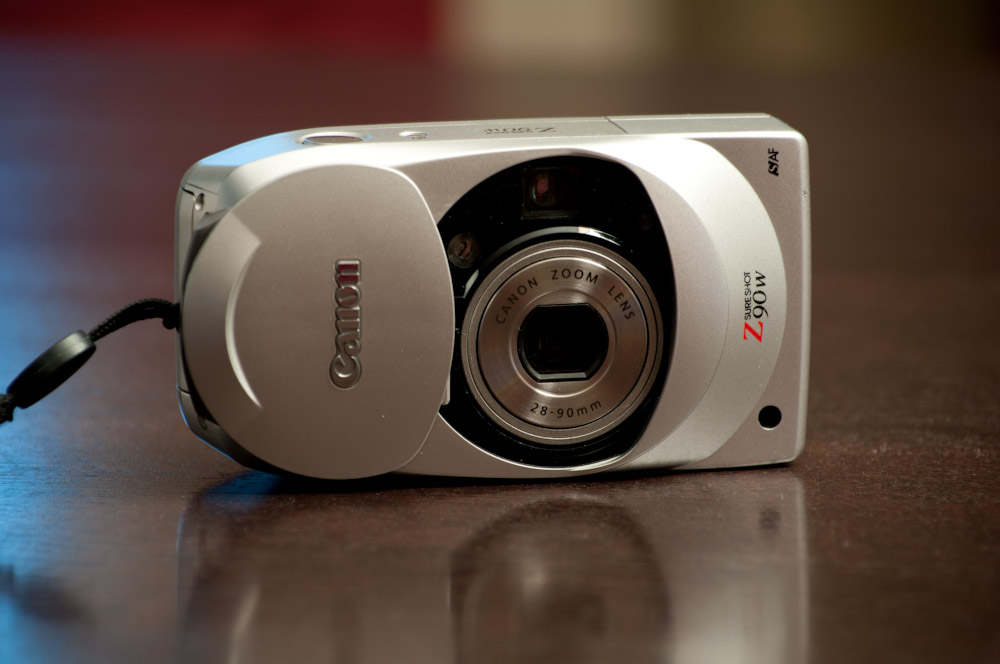Voigtlander Vito CL
These are the 12 exposures I managed to take with my Voigtlander Vito CL before the film stopped advancing. I first noticed it when I advanced the film and could hear it skipping the sprockets. I thought I was at the end of the film. How could I think that I had taken 24 shots when I only took twelve? That’s easy I was carrying a ‘litter’ of cameras and not really paying attention to which one I had used as well as the fact that I hadn’t set the counter for the Vito CL back to zero when I loaded the film. The only real loss was the potential of taking another 12 shots as I rewound the film as soon as I ran into the problem.
The Vito CL is a viewfinder camera and you focus by the scale on the front of the lens. I prefer an actual rangefinder but scale focusing works too, it just requires estimating distances accurately. I am happy with the quality of the pictures from the Lanthar 50mm f2.8 lens. The shutter button is actually a sliding switch on the face of the camera and works quite well if you grip the camera with both thumbs on the back. Holding the camera this way ends up further reducing the already low camera shake of the leaf shutter.
Olympus Stylus Epic May 2013
The Olympus Stylus Epic (mju ii) is my go to pocketable film camera and there isn’t much more to say that hasn’t been said other than to re-iterate what a great camera this is. I used Kodak Ektar 100 film which I also think is a perfect pairing for this camera. Other posts from and about this camera can be seen here Olympus Stylus Epic
Minolta Vetis S1 more APS film
I’ve had some pretty bad luck with out of date APS film much of it producing thin negatives that did not scan well, so this time I used the exposure compensation feature of the Minolta Vectis S1 to dial in +1.5 EV of exposure compensation. The film was Kodak Advantix 400 so with the compensation the camera would have selected exposures as if the film was about 140 ISO. I can’t say for sure how much of a difference this made because I didn’t take any shots without the compensation but I did get better results than I have been recently.
More Minolta Vectis S1 here Feb 2013, Nov 2011, Expanded Vision Through Narrower Thinking
Adox Color Implosion Reds
I have to admit I was a little disappointed at first with the results I got from this film but it may have been more about my expectations than the film itself. Adox describes it as having ‘Bursting Reds’ so I made sure that I shot a lot of red things. They also suggest that to get the best results for reds to shoot at 200 ISO while I shot the film at 100 ISO which is what was on the film canister. So to achieve closer to the result I was after I tweaked the reds in Lightroom as well as some other adjustments. This image demonstrates the difference. 
And of course the grain is pretty extreme, as they say no one is going to mistake that for digital. In the end though I got what I deserved 36 frames with a very different look.
Ilford XP2 Disposable
I thought it would be fun to try Ilfords XP2 400 disposable camera to see just what you might get. I have to admit I have little experience with using disposable cameras and the results showed it. I think where I failed was assuming that there was more latitude for exposure than there was. Most of my images were terribly underexposed which makes sense in hindsight as the camera likely has a maximum aperture of somewhere around f8 and a shutter speed around 1/125 sec this combination would likely require an EV value around 13 where I shot most of my images at light levels far below that. In fact maybe a quarter of the images were not even scannable. The lesson is that these cameras are only useful under limited conditions. As for the flash I could have used it more if I had known but even then it wouldn’t have saved these shots. You can also see that the lens is quite soft in the corners, it is disposable after all.
ACHTUNG And most importantly of all if you open these cameras to recover the film (Which is just in a regular film canister) when your done make sure you give it to someone else to get shocked. Perhaps I should explain myself. I brought the camera to the local camera store where I have my film sent out for developing and asked for the camera back. Together the kind store employee, whose name I will change to protect their identity lets call them ‘Sparky’, and I started to take the camera apart carefully so as not to break it. When it was partially apart Sparky yelped and began shaking his hand like it had been stung by a bee or in this case a 300v 80µ farad capacitor. Just as all humans are compelled to sniff the sour milk I too picked up the camera thinking that it would now be discharged and safe. Whack! Flash! Drop! Bang! Good thing I don’t have a pacemaker. I’ve been shocked in this way before but it’s not something you get used to, every time is like the first time, the very first time, it ‘Feels Like the First Time’ (Foreigner 1977) Where was I? Right, you can see the warning on the back of the camera ACHTUNG Überspannung, Kamera Nicht ö ffnen Funny how it sounds more serious in German. 
Anyway here is a picture of the bits so that you don’t need to feed your curiosity with a shocking flash of understanding.
And finally some pictures taken with it.
Adox Color Implosion
Adox’s Color implosion film is marketed as having ‘a modified color scheme’ from there website translated to english:
Place your camera to ISO 400/27 °. The color option of your memory film implodes and you get images with very little color and “Toxic Grain”. This awaits you if you belichtest Color implosion with your Holga.
Now I don’t know what blichtest means but it doesn’t sound good and I don’t like anyone telling me I have to use a Holga.
So the second suggestion which might have been what I was after is.
Place your camera to ISO 200/24 °. Now everything explodes red, while the others remain in the green-blue color. “Toxic Grain” is red.
If you like share with your laboratory staff that you would like the movie “supercharge plus 1”. “Bursting Red” also in your Holga
Still I don’t want anything bursting in my Holga if I had one, so I went with the third option.
Place your camera to ISO 100/21 °. Now makes Color implosion for you beautifully surreal 70s summer colors. The “Toxic Grain” is now yellow and not as concise.
By the way this is what ‘Toxic Grain’ looks like 
While I had hoped for the reds to really stand out, they ended up being quite muted, perhaps because of my choice to shoot at 100 ISO. I’ve set a few of those images aside for a future post where I show the difference between the raw scans and the edited files. For those I boosted the red channel to more closely match my expectations. But without further ado(x) here are the images I belichtested.
Konica EE Matic Deluxe
The Konica EE Matic doesn’t require a battery, that’s a good thing because I’m not sure it deserves one. I guess if your intention is to take pictures that have the look of having been taken with a cheap 1960’s rangefinder nothing beats a cheap 1960’s rangefinder. It has that in spades. If it’s a quality image your after then there are better options. The problem is the lens it has very bad coma distortion which results in the image being stretched the further it is from the center. This distortion could be reduced by stopping the lens down but as the camera has completely automatic exposure that is not under your control.
On the other hand it has a nice bright viewfinder that also indicates the shutter speed and it won’t release the shutter if there isn’t enough light for a proper exposure, like when you leave the lens cap on, it happens.
Nikon L35AF
I shot another roll throught the Nikon L35AF this time without the silly lens adapters. Thats better, it’s now as good as all the rest of the 35mm focal length autofocus point and shoots hardly anyone remembers.
Canon Z90W
Released in 2000 the Canon Z90W (Autoboy Epo) has a 28-90mm f4.5-9.9 lens which is slow at the telephoto end but the quality of the optical system overall is quite good. Being from 2000 its just new enough to find internet reviews from the time the camera was released. The best part of this camera is the large mode dial on the back, with 7 different positions, the most interesting to me being ‘Personal’ which lets me configure the flash to be off at all times. This is done be selecting Personal on the dial and then pressing the mode button then using the zoom buttons to toggle through the available flash choices; Auto,Red eye,Flash on,Flash off,+1.5 exposure comp.,-1.5 exposure comp., and slow sync flash.
Of the point and shoot film cameras with zoom lenses that go down to 28mm this is the best. Used at the 28mm wide end it compares well with fixed focal length film compacts.









































































